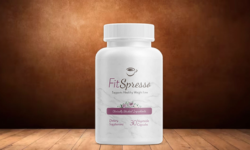
Allergies can be a relentless adversary, disrupting daily life with a symphony of sneezes, itchy eyes, and a runny nose. While these symptoms might seem insurmountable, relief is within reach. Lorphenadine, a potent antihistamine, has emerged as a formidable weapon in the fight against allergies. This comprehensive guide will delve into the world of lorphenadine, exploring its mechanism of action, benefits, potential side effects, and how to use it effectively.
Understanding Allergies
Before we dive into the details of lorphenadine, it’s essential to grasp the basics of allergies. Allergies occur when your immune system overreacts to harmless substances like pollen, dust mites, pet dander, or certain foods. This overreaction triggers the release of histamine, a chemical that causes allergy symptoms.
What is Lorphenadine?
Lorphenadine is a non-sedating antihistamine. It works by blocking the effects of histamine in the body, providing relief from allergy symptoms. Unlike older generations of antihistamines, lorphenadine is less likely to cause drowsiness, allowing you to go about your day without feeling sluggish.
How Does Lorphenadine Work?
When you’re exposed to an allergen, your body releases histamine, which leads to allergy symptoms. Lorphenadine prevents histamine from binding to its receptors, effectively blocking the allergic response. This results in a reduction of symptoms such as sneezing, runny nose, itchy eyes, and congestion.
Benefits of Lorphenadine
Lorphenadine offers several advantages over other allergy medications:
Effective symptom relief: It provides reliable relief from a wide range of allergy symptoms.
Non-sedating: Unlike older antihistamines, lorphenadine is less likely to cause drowsiness, allowing you to stay alert and focused.
Long-lasting relief: With once-daily dosing, lorphenadine provides long-lasting relief from allergy symptoms.
Suitable for most people: Lorphenadine is generally well-tolerated and can be used by people of all ages, including children and adults.
Lorphenadine Dosage and Administration
The appropriate dosage of lorphenadine depends on several factors, including your age, the severity of your allergies, and your doctor’s recommendations. It is typically available in tablet, capsule, and liquid form.
Adults: The usual adult dose is one tablet or capsule taken once daily.
Children: The dosage for children varies based on age and weight. Consult your pediatrician for specific guidelines.
It’s crucial to follow the instructions provided by your healthcare provider or the medication label carefully.
Side Effects of Lorphenadine
While lorphenadine is generally well-tolerated, some people may experience mild side effects, including:
Dry mouth
Headache
Fatigue
Dizziness
Upset stomach
These side effects are usually mild and temporary. If you experience severe or persistent side effects, consult your doctor.
Precautions and Interactions
Before taking lorphenadine, it’s essential to inform your doctor about any pre-existing medical conditions, allergies, or medications you’re currently taking. Lorphenadin’e may interact with certain drugs, so it’s crucial to disclose all medications to your healthcare provider.
Lorphenadine and Pregnancy and Breastfeeding
If you are pregnant or breastfeeding, consult your doctor before taking lorphenadin’e. While studies have not shown significant risks, it’s essential to weigh the benefits and potential risks with your healthcare provider.
Choosing the Right Allergy Medication
Lorphenadin’e is an excellent option for many people with allergies. However, it’s essential to consult with your doctor to determine the best treatment plan for your specific needs. Other allergy medications, such as decongestants, nasal corticosteroids, and mast cell stabilizers, may be considered depending on the severity and type of your allergies.
Lifestyle Modifications for Allergy Relief
In addition to medication, incorporating lifestyle changes can help manage allergy symptoms. These include:
Identifying and avoiding allergens: Pay attention to triggers and take steps to minimize exposure.
Maintaining good indoor air quality: Use air purifiers and regularly clean your home to reduce allergen levels.
Washing bedding in hot water: This helps kill dust mites.
Showering after outdoor activities: Remove pollen from your body.
Conclusion
Lorphenadin’e is a valuable tool in managing allergy symptoms. By understanding how it works and taking appropriate precautions, you can effectively incorporate it into your allergy management plan. Remember, consulting with a healthcare professional is essential for personalized advice and treatment recommendations. With the right approach, you can regain control over your allergies and enjoy a better quality of life.









